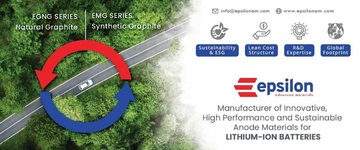Setting the stage for adoption of advanced energy storage technology
Since 2017, India Energy Storage Alliance (IESA) and various industry groups around the globe have been commemorating World Energy Storage Day (WESD) on September 22 (equinox) of every year to acknowledge the growing significance of energy storage technologies in balancing the grid and enabling a cleaner transportation sector.
Today, WESD has gained more prominence for nurturing global collaborations. This is because COVID-19 has shown countries the challenge that lies ahead if they rely only on one supply chain partner/region. As a result, several regions have now started to think of energy security as a key factor and have started promoting regional manufacturing hubs. This has democratized the entire supply chain drastically from what it was only a few years back.
Of the global regions, the most prominent expansion is underway in Europe -- where more than 600GWh of advanced cell chemistry storage manufacturing is expected to come up in the next five years. Followed by the U.S., where 300GWh manufacturing is expected to come up. In India, the Union Cabinet has approved the ACC program for 50 GWh battery storage manufacturing. We at IESA, have set a roadmap for achieving 500GWh manufacturing capacity in India by 2035.
The other big opportunity for the industry remains in the emerging storage technologies space. IESA believes there is a need to accelerate the adoption of longer-duration energy storage technologies including hydrogen and other similar technologies. There is a need for greater global collaboration and partnerships for fast-tracking the adoption of these technologies.
In terms of EV adoption, when we look at the EV adoption led by China, the EU, the U.S. it is indicative that we are on the verge of a tectonic shift. India is also leading the path with the e-2W market and what we see is that today, demand is no longer a constraint, but supply is. Therefore, several companies have started ramping up their production capacity. It is expected that India will reach a 25-million annual electric 2W production capacity within the next 3-4 years. All these factors go to show that we have entered an exponential growth phase for these technologies and with an increasing number of choices made available to consumers, we anticipate that the EV market is about to change in the next two years.
By EV market, we are no longer referring to the road transport alone, we believe drones, e-planes, urban air mobility can become a reality in the next five years including electric boats for marine transport and EVs for many specialized applications like mining, ports, and airports where the business case for electrification has already been established.
I urge all our ETN readers to join us for the virtual WESD – Conference & Expo on September 22 and become a part of this global movement. This year, we have four panels in each region (APAC, India and Russia, EMEA, and Americas) covering stationary storage, e-mobility, green hydrogen, and manufacturing/innovation. In addition, the event will also include 10 workshops on topics covering Solar + Storage, Long-duration Energy Storage, Fires in ESS and EVs, EV Charging Infra, Urban Air Mobility, Energy Access, Women in Energy, etc.
To register/ to get more details, do visit: www.energystorageday.org.
























